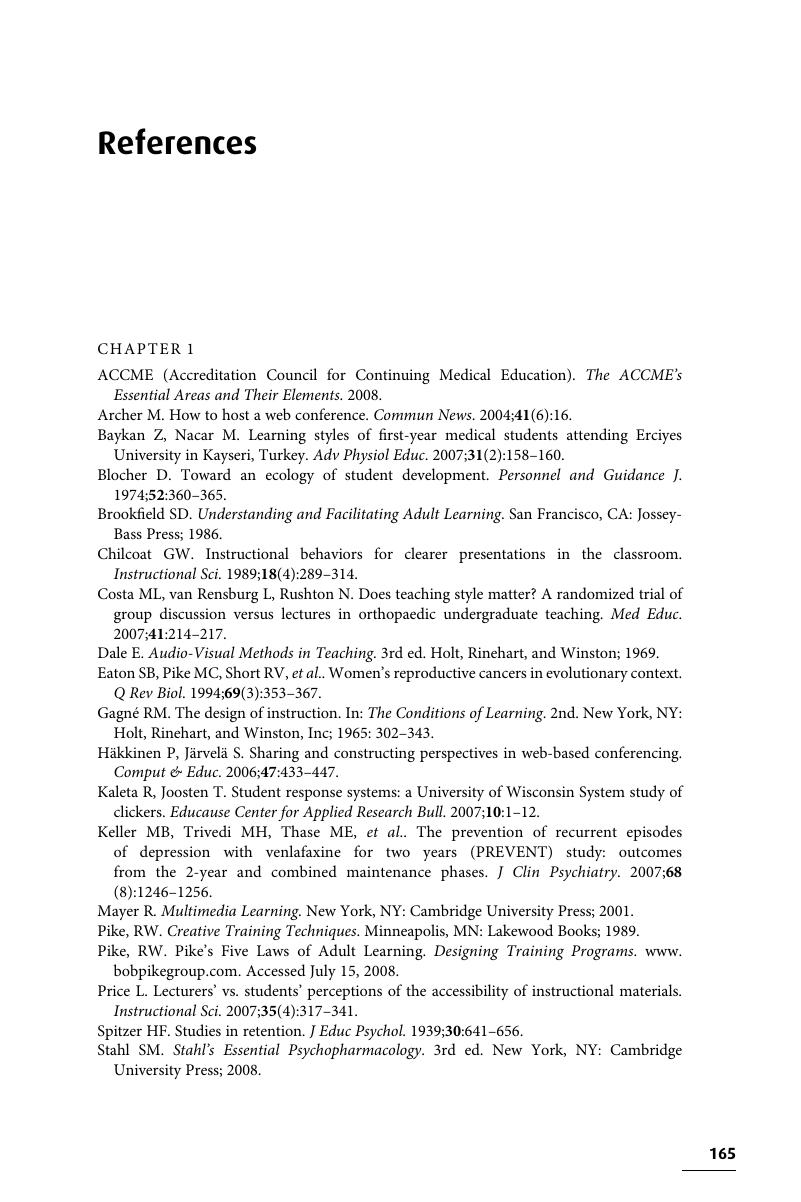Book contents
- Frontmatter
- Contents
- Preface
- About the authors
- Foreword
- Acknowledgments
- Introduction
- 1 Applying the principles of adult education to the designing of medical presentations
- 2 Using audience learning psychology to advantage in designing and delivering medical presentations
- 3 Executing the principles of adult learning in medical presentations
- 4 Measuring outcomes and ensuring success
- 5 Using interval learning in a comprehensive medical educational program
- References
- Progress check answer keys
- Progress check answer sheets
- Index
- References
References
Published online by Cambridge University Press: 05 August 2011
- Frontmatter
- Contents
- Preface
- About the authors
- Foreword
- Acknowledgments
- Introduction
- 1 Applying the principles of adult education to the designing of medical presentations
- 2 Using audience learning psychology to advantage in designing and delivering medical presentations
- 3 Executing the principles of adult learning in medical presentations
- 4 Measuring outcomes and ensuring success
- 5 Using interval learning in a comprehensive medical educational program
- References
- Progress check answer keys
- Progress check answer sheets
- Index
- References
Summary

- Type
- Chapter
- Information
- Best Practices in Medical Teaching , pp. 165 - 170Publisher: Cambridge University PressPrint publication year: 2011

